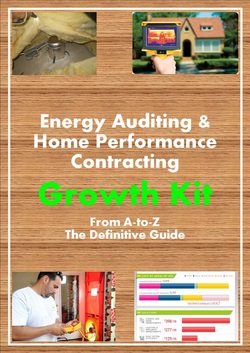Passing the BPI Exam With Energy Auditor Training
BPI PRACTICE EXAMPUT YOUR HOME PERFORMANCE BUSINESS ON ROCKET FUEL |
BPI Written Exam - Section 2 Buildings and Their Systems
Solar Gain Reduction in Cooling ClimatesShade screens are a favorite in cooling dominated climates because:
Shade screens do have some down sides:
Solar Gain Opportunities in Heating ClimatesSolar gain opportunities are divided into the design-build phase and existing homes.
During the design phase of the home, the best orientation for winter heat gain exposure is having lots of south facing windows with an overhang or shade structure blocking the windows from the high summer sunlight but allowing solar heat gain in the winter. Next Section2a. Building Components
2b. Conservation Strategies
2c. Comprehensive Building Assessment Process
2d. Design considerations
|

